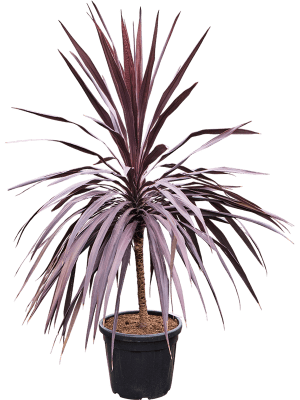
Cordyline australis 'Burgundy' (160-180)
Stem
4COBURS10
Origin
The Olea europaea, better known as the olive tree, has its roots in the Mediterranean region. From here, this evergreen tree species has spread to various warm climates. Since ancient times, the tree has been cultivated for its fruits and oil, which form an integral part of many cultures.
Characteristics
The Olea europaea can be recognised by its characteristic, gnarled trunk and narrow, silver-coloured leaves. The tree bears small, white flowers, followed by the well-known round, green to black-coloured olives when they are ripe. Due to its slow growth, the olive tree can become very old, some specimens are estimated to be over a thousand years old.
Care
Caring for an Olea europaea requires a warm, sunny spot and well-drained soil, as the roots are sensitive to stagnant water. Regular watering is necessary during the growing period, but it is important to let the soil dry out between watering sessions. The olive tree is relatively hardy in winter, but it is best to protect it during severe frost with a liner or bring it inside to a cool, bright place.
| Phone NL | +31 885 014 000 |
|---|---|
| Phone NGC | +31 885 014 014 |
| Phone FR | +33 (0)130 760 344 |